Painting is an important part of education in Pre-K. It’s messy, but purposeful. Here are some tips to help preschool teachers with painting in the classroom.
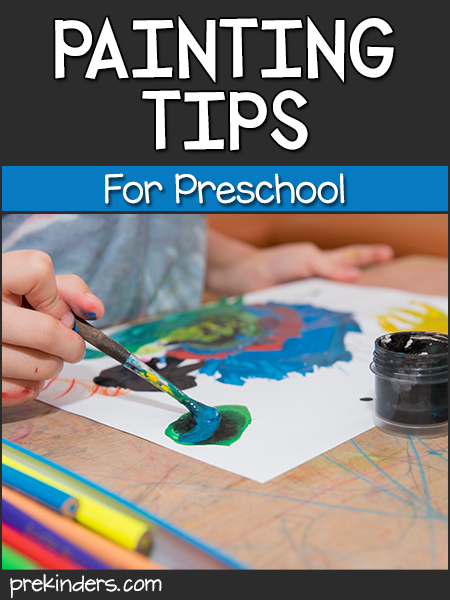
Choosing Paintbrushes
I prefer paintbrushes that have the handle made all of plastic rather than the metal and wood ones. The metal eventually rusts and the wood expands when wet and separates from the metal over time.
Big, thick paintbrushes are one of my Pre-K pet peeves. I’m not a fan of them. It seems everyone wants to put fat paintbrushes into tiny hands. I find this especially odd now that teachers are being encouraged to move away from “fat” pencils and crayons.
Try the thin paintbrushes! You’ll see a huge difference in children’s artwork. With thick paint brushes, children tend to just smear paint around the paper. That’s great for exploring paint, but not what you want kids to do all year long. Use the thinner brushes and you will see children paint with more detail. Children can’t paint detailed art with thick paintbrushes. Try it yourself, you probably can’t, either.
I have thick, medium, and thin paintbrushes. I use the thick at the beginning of the year just for exploring the paint, then I use the medium, and then the thin ones. You can also offer a choice.
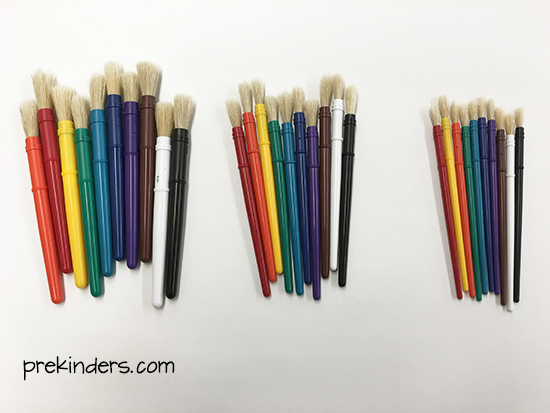
Cleaning Paintbrushes
When cleaning paintbrushes, the best thing to do is lay them flat. Brushes usually need to be soaked for awhile then rinsed. Get an inexpensive plastic shoebox from a dollar store and keep it near your paint easel.
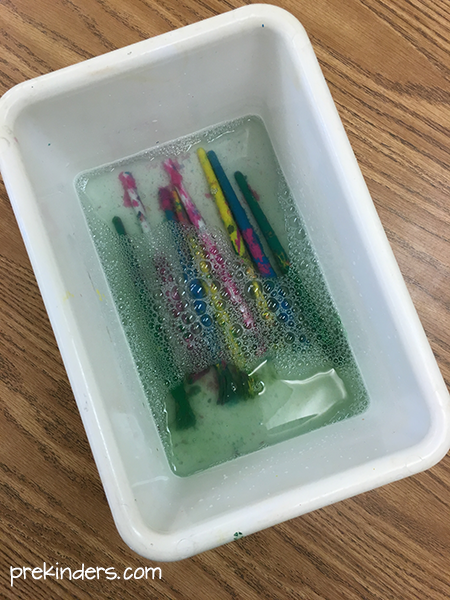
When brushes need to be soaked, put enough water in the shoebox to cover the paintbrushes and lay them in the box flat.
If you stick your paintbrushes down in a cup of water to soak, the bristles will get bent.
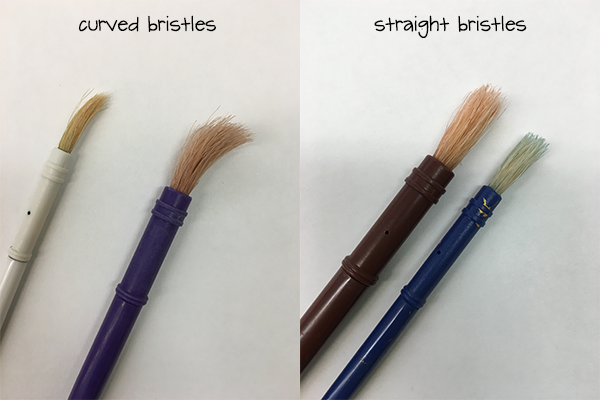
Most paintbrushes can be cleaned just with water if washable tempera paint is used. You can try adding a small amount of bleach if they are stained (keep out of children’s reach).
Paint Smocks
Choose a paint smock that wipes off easily and children can pull on and off independently. These are the art smocks I have in my art center.
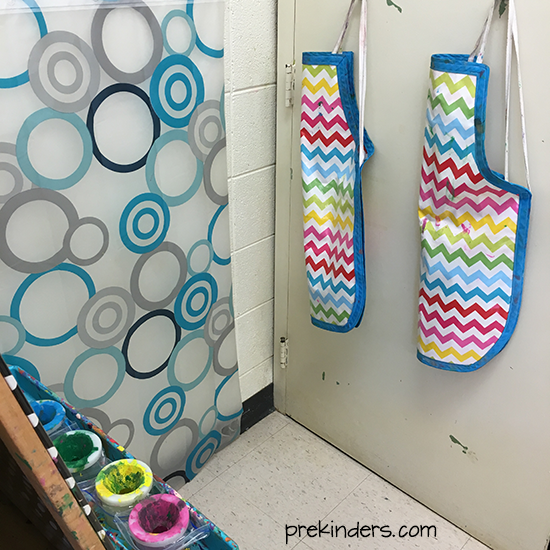
I love the way they have criss cross straps in the back, so that they stay in place and the kids can get them on and off without my help.
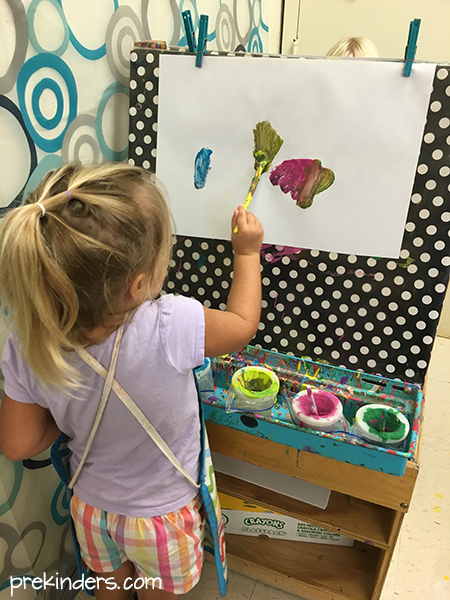
Kids do need to be shown how to put them on in the beginning, but once they get the hang of it, they can do it independently. I bought these smocks from Tiffany Acuff. You can order these from Tiffany’s Kitchen (store) or visit Tiffany’s Kitchen (Facebook page). (This is not a paid ad, but Tiffany is offering a giveaway for one of these paint smocks. Scroll to bottom for the giveaway.)
Try Different Kinds of Paint
Give kids the experience of using different kinds of paint. Use tempera paint, but also let kids try watercolor paint, puff paint, finger paint, glitter paint, homemade paint. Try mixing the colors so children have some pastels and darker hues rather than just the basic colors. There are different kinds of watercolor paint to try: dry watercolor, liquid watercolor, tube watercolor.
Try Different Paintbrushes
Try Q-tips, sponges, feathers, marbles, flowers, pine needles, or dot paint with pencils.
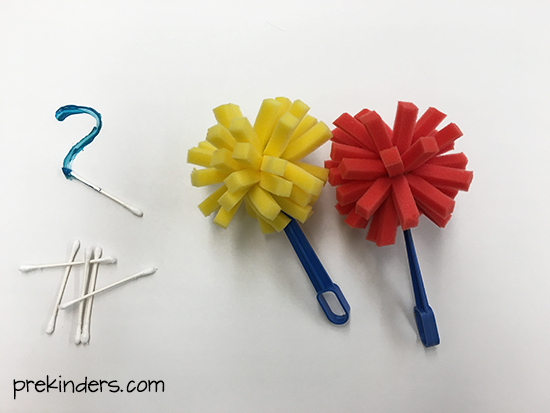
Provide the Right Tools
Different kinds of paint need different kinds of paper and paintbrushes. Tempera paint is a heavy paint, so you need a thicker paper that can stand up to it. With watercolor paint, you need an absorbent paper. I like to buy watercolor paper, but white construction paper works pretty well, too.
Tempera paint works well with stiff bristled brushes. Watercolor paint works better with soft bristles.
Have a Drying Rack and Sink Nearby
Be sure you have a place for paint papers to dry. You can use a regular drying rack or a collapsible clothes rack. If possible, arrange your classroom where it will be close to a sink. My current classroom does not have a sink, but my art center is near the door and there are sinks outside in the hall. If you have no close access to a sink, be sure to have wet wipes handy.
Line Your Paint Cups with Plastic Bags
Before pouring in the paint, put a plastic sandwich bag down in the paint cup. Pour in the paint. When you need to change out the paint, just throw the bag away! No mess!
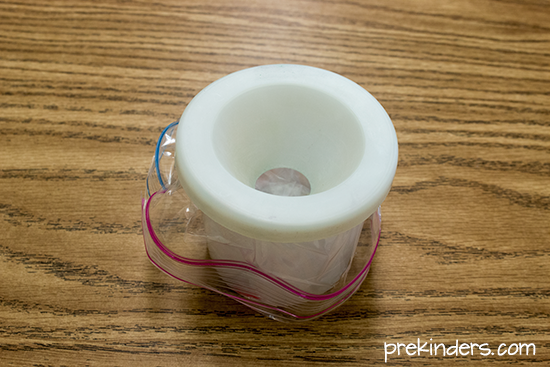
Why You Need a Slanted Easel
There’s a reason why most preschool classrooms have a vertical easel with a slanted surface. Painting at a vertical easel helps children use the muscles in their arms, shoulders, and wrists. Make sure your classroom has one (or more)!
